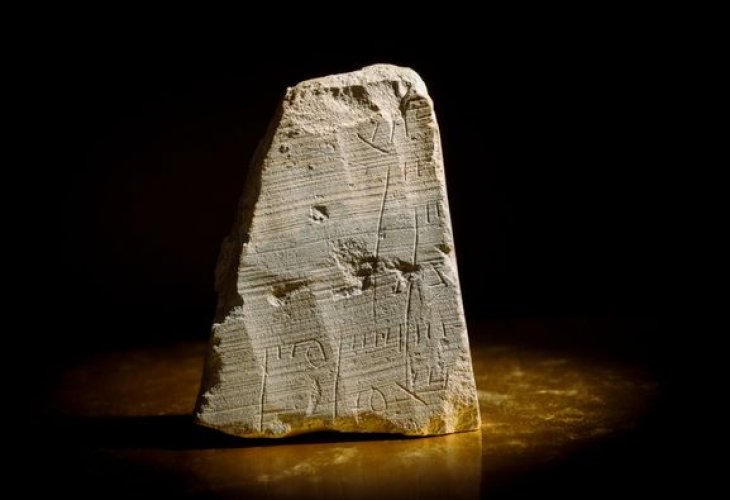Unearthing Shimon: A Glimpse into Ancient Jerusalem
A 2,000-year-old economic inscription was uncovered on the pilgrim's path in the City of David. Who was 'Shimon' mentioned in this ancient Hebrew inscription?
 (Photo: Eliyahu Yanai, City of David)
(Photo: Eliyahu Yanai, City of David)In archaeological excavations conducted by the Israel Antiquities Authority in the City of David within the Walls Around Jerusalem National Park, funded by the Elad Foundation, a small fragment of a stone tablet with an economically purposed inscription was discovered.
The inscription preserved approximately 7 partial lines, containing several Hebrew letters and name fragments alongside numbers. For instance, one line ends with the name 'Shimon' followed by the letter Mem, and other lines feature numerical symbols. Before some numbers, the economic value is indicated by the letter Mem as an abbreviation for 'money', or by the letter Resh as an abbreviation for 'quarter'.
This intriguing find was unearthed in the lower city square of Jerusalem, located on the route of the pilgrims' path. This 600-meter-long road connected the city's gate and the Pool of Siloam area in southern City of David to the gates of the Temple Mount and the Second Temple, effectively serving as the main street of Jerusalem from that era. This unique artifact joins a series of other discoveries at the site, such as weights and a volume measurement table, which reveal the economic nature of the area.
The stone tablet bearing the inscription was found in a trench from a previous excavation at the site. This trench was dug at the end of the 19th century by British archaeologists Bliss and Dickie, who excavated trenches and shafts along the stepped street. Although the inscription was found outside its original archaeological context, the type of script, the type of stone tablet on which the inscription was carved, and parallels from other inscriptions allow for its dating to the early Roman period, specifically the end of the Second Temple period.
Researchers Nachshon Zantone, excavation director from the Israel Antiquities Authority, and his research partner, Prof. Esther Eshel from Bar-Ilan University, recently published an article in the journal "Atiqot", noting that to date, four other similar Hebrew inscriptions have been documented in research, found in Jerusalem and Beit Shemesh, indicating names and numbers engraved on similar stone tablets from the early Roman period. However, this is the first inscription revealed within the city of Jerusalem itself.
They state, "The inscription was etched with a sharp tool on a limestone tablet. The stone tablet originally served, most likely, as a cover for an ossuary (a small stone burial chest), an item common in Jerusalem and Judea during the early Roman period (37 BCE to 70 CE). Generally, ossuaries are found in graves outside the city, but their presence within the city suggests a local manufacturing site or a shop selling them".
According to the researchers, "The daily life of Jerusalem's inhabitants 2000 years ago is reflected here, particularly in the regular and simple form of everyday objects. Seemingly, a list of names and numbers is not particularly exciting, but thinking that, just like today, receipts were used for commercial needs, and such a receipt has reached us, is rare and joyous, allowing a glimpse into the ordinary and simple life that took place in Jerusalem, the city of the Temple".
They add: "The fusion of the architectural and tangible area with the massive paving stones of the square preserved on the site and the small finds uncovered, such as the measuring table and new inscription, enables the reconstruction of parts of the archaeological puzzle in one of the lively life centers that existed in ancient Jerusalem. Every piece of information—and certainly an ancient inscription—adds a new and fascinating hue to the city's historical narrative".
Heritage Minister Rabbi Amihai Eliyahu noted, "The unique discovery along the pilgrims' path in Jerusalem reveals another facet of Jewish life in the city as far back as 2,000 years ago. The unique excavations by the Israel Antiquities Authority at the site are solidifying the City of David as an international historic focal point of the Jewish people. The Ministry of Heritage will continue to act to strengthen and promote national heritage at all levels".

